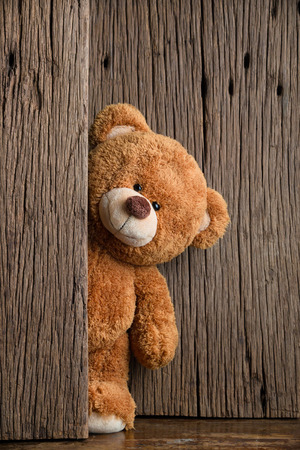Where Was the First Teddy Bear Born?

Given the state of transatlantic communication between the United States and Germany in the early 20th century, it’s almost impossible to know when the first teddy bear came to life, or who its parents were: Morris Mitchtom and his wife Rose in Brooklyn, New York, USA or Margarete Steiff and her nephew Richard Steiff in Giengen, Germany. Suffice it to say that when stuffed teddy bears first arrived in late 1902/early 1903 it didn’t take long for them to become popular, especially in the United States. And those early bears have President Theodore “Teddy” Roosevelt to thank for agreeing to let them use his name.
Mitchtom founded the Ideal Novelty and Toy Company (later the Ideal Toy Company) to handle the making of his teddy bears, while the Steiffs added the bears to the production line of their already-existing felt toy factory. They even adopted the name “teddy bear” for their new toy. Soon teddy bears multiplied into the thousands as they became popular in both countries.
Teddy Bear Popularity
Teddy bears started out as toys for children, perhaps as a substitute for dolls. But they soon became more than that. By 1906 teddy bears were the rage in the United States and Europe. Adults as well as children cuddled up to them.
The bears were so popular that more and more companies began making them, spreading from Germany to France and England to far-away Australia. Teddy bears had a magical quality about them that other toys lacked, a quality that endeared them to their humans who loved and cared for them. In 1907 Steiff sold 975,000 teddy bears themselves! Combined with other teddy bear makers, more than one million teddy bears found human homes that year.
Depression
Then came two World Wars and the Great Depression. Fewer teddy bears were made as families had less money to spend on “toys” even though children needed the bears’ comfort more than ever. This was especially true in Europe, where imports from Germany, even including innocent teddy bears, were curtailed during World War II. In the United States, teddy bears lost their makers as many toy manufacturers closed during the Great Depression.
But teddy bears may have been down, but they weren’t forgotten. Nor were they to be relegated to the toy world forever. Their human companions couldn’t get enough of them, and so found themselves adopting more and more teddy bears.
Resurgence
Then in 1969 British actor Peter Bull published Bear with Me, a book about his affection for teddy bears. Adults discovered it was OK to love and own teddy bears. Bull’s book reignited the teddy bear craze, and started the teddy bear collecting trend that continues to this day, a trend that has rescued many a forgotten and well-worn teddy from dire circumstances and given them a place of honor in a new home.
We love our teddy bears. Teddy bear clubs, stores and museums sprang up with one purpose in mind—to help teddy bear owners and admirers share their love for their teddy bear companions. For we like to invite teddy bears to share our homes with us, to be our friends and part of our family.
Bears Are Characters
But bears were not just toys. They were subjects of children’s books, comic strips, and cartoons. An early comic strip featured Rupert Bear (1920). Paddington Bear appeared on the scene in 1958. And perhaps the most famous bear of them all, Winnie-the-Pooh, is now 90 years old, having first appeared in a children’s book by that name in 1926. Written by A. A. Milne for his son Christopher, Winnie-the-Pooh is not only the main character in Milne’s books, but thanks to Disney, is the star of his own cartoon.
Today, many teddy bears are massed produced, but some manufacturers such as Steiff still produce hand crafted teddy bears. And a cottage industry has arisen where teddy bear artists make a limited number of teddy bears by hand for fans of all ages. So it seems as though the teddy bear is destined for a long life. He is already over 100 years old—100+ years of bringing joy and comfort to children old and young—and shows no sign of slowing down. May the teddy bear live long and prosper!
What’s your interest in teddy bears? Are you a collector or parent? Feel free to share in the box on the contact page.
